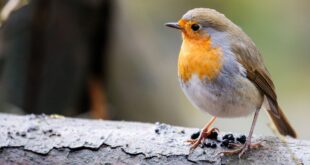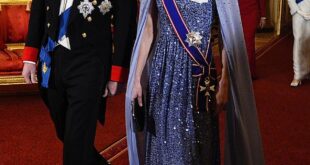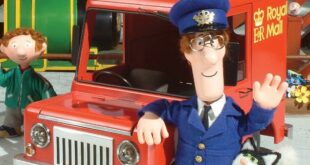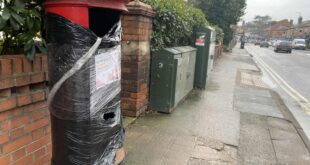Related Articles
Britain’s Queen Elizabeth will long be remembered for wowing the Irish nation with a simple head bow at the Garden of Remembrance, to heroes who died fighting her country’s army.
hat moment of symbolism was enhanced by some superbly well-chosen words later at Dublin Castle. Her beguilingly simple speech at the State banquet in her honour, back in May 2011, even began with five faltering words as Gaeilge: “A hUachtaráin agus a chairde.”
The visit by herself and husband, Prince Philip, was a triumph and helped bring a good neighbourly relationship between two adult democracies to a highpoint. But Elizabeth’s relationship with Ireland has not always been easy. At times it has mirrored the difficult and ambiguous relations between the peoples of these two islands, too often tinged with violence.
During her speech at the Dublin Castle State dinner she offered sincere thoughts and deep sympathy to all who suffered “as a consequence of our troubled past”. It was a deft attempt to heal still painful historic wounds.
“With the benefit of historical hindsight we can all see things which we would wish had been done differently, or not at all,” she said, memorably summing up centuries of mutual murder and mayhem.
As she marks 70 years on the British throne tomorrow, we note also that she has been the only constant in an up-and-down relationship between Ireland and Britain since 1952. No other entity – in either country – has been a political fixture for so long.
The Irish Free State was barely a handful of years old when Elizabeth Windsor was born into a world in which the British Empire still loomed large in 1926. The empire was a fading but not forgotten feature when she ascended the British throne in 1952, and she was in what was still the colony of Kenya when she got news of her father, the king’s death.
In 2020 the writer John Banville, using one of his pseudonyms, wrote a book called The Secret Guests. He said it was based on a popular piece of folklore that the princess Elizabeth and her younger sister, Margaret, were secretly evacuated to a manor house in the Irish midlands to protect them from German bombers in 1941, while their stoic royal parents remained with subjects in London.
Banville acknowledged his fictional tale would be hard to prove. But we do know that Elizabeth’s wayward and glamorous younger sister, the princess Margaret, did visit the Irish midlands several times.
That was decades before her sister became the first reigning British monarch to visit this jurisdiction in 100 years. And the experiences of the queen’s younger sister offer some insight into how the famously discreet queen viewed matters Irish.
Margaret stayed at Abbeyleix House in 1962 when she and her husband, the celebrity photographer universally known as Lord Snowdon, visited his relatives, the de Vescis. She and Lord de Vesci had a near miss in a car accident which left the princess badly shaken.
Another visit, in January 1965, was far more eventful. There were already ominous signs when the couple’s car was impeded by felled trees on the first leg of the journey to Birr Castle. “While staying at Birr, Princess Margaret and her in-laws joined in a song-fest at a tavern and enjoyed themselves without incident,” the AP news service later reported. But things got more serious around Abbeyleix on January 6, 1965.
An IRA explosion and fire cut electricity to the manor house and surrounding area. The town of Abbeyleix had been daubed with slogans urging “Maggie go home”.
The IRA, who had ended their five-year violent border campaign in 1962, said they intended the princess no harm. They merely wanted publicity about the injustice of partition in Ireland – and they got their international headlines. Margaret insisted she would visit Birr and Abbeyleix again, but it was not to be, in part because she and her husband divorced.
In October 1979 the princess was again the focus of Irish controversy when she was reported as having declared “all Irish are pigs” in a dinner conversation with the Chicago mayor, Jane Byrne. She later insisted that the remark had been misheard and that she had actually said “all Irish dance jigs”.
But the US security authorities increased protection during a further leg of her American visit to Los Angeles. The controversial alleged anti-Irish comments must also be seen in the context of the brutal IRA bomb murder of the queen’s cousin, Lord Louis Mountbatten, off the coast of Sligo just weeks earlier on August 27, 1979.
Mountbatten, a naval commander and diplomat, was a close confidant of Elizabeth’s family, especially her husband Philip and their son Charles. The Mountbattens frequently holidayed at their Classiebawn Castle in Co Sligo and, despite security misgivings, he always insisted gardaí must keep their distance.
The bomb also killed three others, including two teenage boys. It happened on the same day as the IRA killing of 18 soldiers at Warrenpoint, Co Down, making it one of the darkest days of the conflict.
The whole thing sparked a major British-Irish political crisis with very frayed relations and criticisms of the gardaí. For the queen and her family it was intensely personal.
Prince Charles later wrote: “It will take me a long time to forgive these people.”
But the prince has made terms with Ireland and is happily now a frequent welcome visitor here.
There were, however, hints along the way that Elizabeth’s sure touch and use of symbolism could play a part in the quest for peace in Ireland.
In 1977, she was marking her 25th anniversary on the British throne with planned visits all across the jurisdiction including Northern Ireland, which was then a cauldron of violence.
Despite huge security fears, the North visit went ahead, and before television cameras in Coleraine, she urged people to move on from “the attribution of blame for the past”.
Another major symbolic milestone, too often forgotten, was the image of the queen and President Mary McAleese, kneeling together in silent prayer, after they jointly opened the Island of Ireland Peace Park in Messines, Belgium, in November 1998.
This park honours Ireland’s World War I dead from all traditions and the supportive role played by Mrs McAleese in the lead-up to the 2011 triumphant visit must always be recognised.
The attrition surrounding Brexit, and its fallout since June 2016 has taken a toll on British-Irish relations, making things look in hindsight like a slow slide down from the heights of May 2011.
There is much repair work to be done and – even at 95 – the queen may yet still play a role.
Source link



